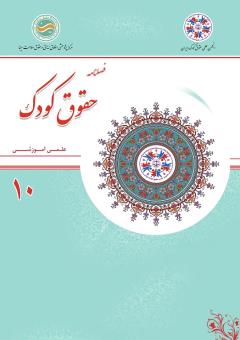بررسی حمایت های قانونی از کودکان زیر 8 سال در اینستاگرام
محورهای موضوعی : حقوق کودک
1 - گروه مطالعات زنان دانشگاه خوارزمی، تهران، ایران
کلید واژه: حریم خصوصی کودک, سلامت روانی کودک, حمایت قانونی از کودکان در اینستاگرام, حق تصویر کودک در اینستاگرام ,
چکیده مقاله :
زمینه و هدف: کودکان یکی از آسیب پذیرترین اقشار جامعه هستند و بهواسطه نقض حقوق شان در معرض انواع بزه دیدگیها قرار میگیرند. همچنین حریم خصوصی کودکان در فضای مجازی نیز مسئلهای بسیار حائز اهمیت است. در این پژوهش ابتدا به رابطه انتشار تصاویر کودکان در اینستاگرام توسط والدین و حریم خصوصی آنها و سپس به آسیبهای انتشار تصاویر کودکان بر شخصیت آنها پرداخته شده و در ادامه قلمرو حمایتهای قانونی از حریم خصوصی کودکان در اینستاگرام مورد بررسی قرار گرفته است. هدف از این پژوهش پرداختن به ضرورت و لزوم وجود حمایتهای قانونی از حریم خصوصی کودکان در فضای مجازی جهت حفظ سلامت و امنیت روانی آنها در آینده میباشد. روش: این پژوهش با استفاده از اسناد و منابع کتابخانهای و به روش توصیفی و تحلیلی نگارش یافته است. یافتهها: فضای مجازی آمیزهای از فرصتها و تهدیدهاست. امروزه شماری از والدین در شبکه اجتماعی اینستاگرام با نقض برخی حقوق کودکان خود مانند حق تصویر، باعث افزایش دنبال کنندگان صفحه اینستاگرام خود شده و بدینوسیله جذب تبلیغات و درآمدزایی میکنند. همچنین یافتهها حاکی از آن است که خلأهای قانونی قابلتوجهی در زمینه حمایت از حریم خصوصی کودکان در فضای مجازی وجود دارد که این خلأها باعث آسیبهای جدی به ابعاد مختلف شخصیت این کودکان در آینده خواهد شد. نتیجهگیری: حمایت از کودکان به دلیل قرارگرفتن آنها در یک موقعیت نابرابر هنگام ایفای نقش در فضای مجازی، امری ضروری و اجتناب ناپذیر است. پیشرفت فناوری و قدم گذاشتن در عصر دیجیتال، نیازمند وضع قوانین حمایتی و سازوکارهای حقوقی اختصاصی است.
Background and Aim: Children are one of the most vulnerable sections of the society and are exposed to all kinds of abuses due to the violation of their rights. Also, children's privacy in cyberspace is a very important issue. In this research, at first, the relationship between the publication of children's pictures on Instagram by parents and their privacy, and then the damage of publishing children's pictures on their personality, was discussed, and then the scope of legal protection of children's privacy on Instagram was examined. The purpose of this research is to address the necessity of legal protection of children's privacy in cyberspace in order to maintain their mental health in the future. Method: This research has been done using documents and library resources and descriptive-analytical method. Results: Cyberspace is a mixture of opportunities and threats. Today, a number of parents by violating some of their children's rights such as image rights, increase the number of followers on their Instagram page and thereby attract advertisements and generate income. Also, the findings indicate that there are significant legal gaps in the field of protecting children's privacy in cyberspace, which will cause serious damage to the various aspects of the children's personality in the future. Conclusion: Supporting children is necessary and unavoidable due to their unequal position when playing a role in cyber space. The advancement of technology and stepping into the digital age requires the establishment of protective laws and specific legal mechanisms.
1. Steinberg Stacey B. Sharenting: Children’s Privacy in the Age of Social Media. Emory Law Journal. 2016; 66: 839.
2. Mohaghegh damad M, Ghanizadeh M. Determining the interests of the child from the perspective of Imami jurisprudence and its foundations. Private law studies, 2016; 47(1): 157-172. [Persian]
3. Instagram Working Children. 2011. Available at: https://www.ana.press/news/319877/ Accessed October 22, 2018.
4. Hosseinzadehmaleki Z. Exploitation of children on Instagram. 2020. Fars news. Available at: https://www.farsnews.ir/news/13990706000039/ Accessed September 30, 2020. [Persian]
5. Inanloo M. Cyberspace and the Dichotomy of children's identities. 2021. Islamic Republic News Agency. Available at: https://www.irna.ir/news/83565289/ Accessed July 4, 2021. [Persian]
6. Seri H. Recognize your child's privacy. 2019. kidtalks. Available at: http://kidtalks.ir/ Accessed October 10, 2019. [Persian]
7. Kari P, Sanderz, J. Media law. Translated by Malekmohammadi HR. Tehran: Mizan Publications; 2007. p. 244-246. [Persian]
8. Ansari B. Freedom of information. 1st ed. Tehran: Dadgostar Publications; 2008. p.123-126. [Persian]
9. Peyvandi GhR. Child Rights. 1st ed. Tehran: The Institute of Islamic Culture and Thought Publications; 2011. p.402-410. [Persian]


